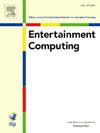Enhancing auction experiences: Game dynamics and customer experience design
IF 2.4
3区 计算机科学
Q2 COMPUTER SCIENCE, CYBERNETICS
引用次数: 0
Abstract
This study explores the relationship between game dynamics and customer experience (CX) design in auction environments, with a particular focus on non-economic game utility and its impact on bidder behavior. Using data from 36 auction events and more than 700 artworks at Christie’s and Sotheby’s (2021–2023), we apply Game Refinement Theory and the Motion in Mind framework to quantify auction dynamics and examine how psychological and social motivations shape participant engagement in English auctions. While financial stakes increase bidders’ focus on maximizing economic returns, our analysis indicates a significant negative correlation between price deviation and auction velocity across all price segments. This suggests that game engagement continues to influence bidder behavior throughout the auction process. Notably, core auction items (highly sought-after pieces) generate strong gravitational effects, drawing bidders’ attention and leading to the neglect of neighboring auction items. Additionally, we employ game design principles and applied psychology theories, such as the Serial Position Effect and the Peak-End Rule, to analyze how auction sequence design impacts the overall customer experience. By strategically structuring auction sequences — such as positioning high-engagement opening items and crafting peak bidding moments — auction houses can optimize bidder participation, engagement, and overall satisfaction.
提升拍卖体验:游戏动态与客户体验设计
本研究探讨了拍卖环境中游戏动态与客户体验(CX)设计之间的关系,特别关注非经济游戏效用及其对竞标者行为的影响。利用佳士得和苏富比(2021-2023)36场拍卖活动和700多件艺术品的数据,我们应用博弈细化理论和心理运动框架来量化拍卖动态,并研究心理和社会动机如何影响英国拍卖中的参与者参与度。虽然财务利益增加了竞标者对经济回报最大化的关注,但我们的分析表明,在所有价格区间,价格偏差与拍卖速度之间存在显著的负相关关系。这表明游戏粘性在整个拍卖过程中持续影响着竞标者的行为。值得注意的是,核心拍品(非常抢手的拍品)会产生强大的引力效应,吸引竞标者的注意力,导致邻近拍品被忽视。此外,我们使用游戏设计原则和应用心理学理论,如序列位置效应和峰值结束规则,来分析拍卖序列设计如何影响整体客户体验。通过战略性地安排拍卖顺序——比如定位高参与度的开拍品和精心打造竞价高峰时刻——拍卖行可以优化竞标者的参与度、参与度和总体满意度。
本文章由计算机程序翻译,如有差异,请以英文原文为准。
求助全文
约1分钟内获得全文
求助全文
来源期刊

Entertainment Computing
Computer Science-Human-Computer Interaction
CiteScore
5.90
自引率
7.10%
发文量
66
期刊介绍:
Entertainment Computing publishes original, peer-reviewed research articles and serves as a forum for stimulating and disseminating innovative research ideas, emerging technologies, empirical investigations, state-of-the-art methods and tools in all aspects of digital entertainment, new media, entertainment computing, gaming, robotics, toys and applications among researchers, engineers, social scientists, artists and practitioners. Theoretical, technical, empirical, survey articles and case studies are all appropriate to the journal.
 求助内容:
求助内容: 应助结果提醒方式:
应助结果提醒方式:


